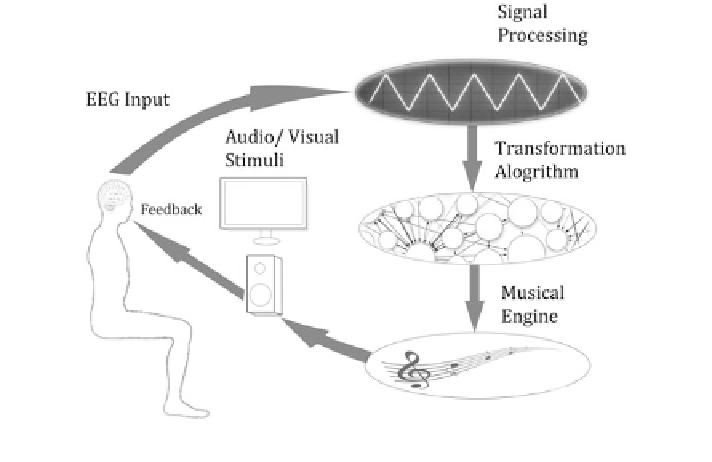Information Technology Reference
In-Depth Information
Fig. 10.1
The make-up of a typical BCMI system
EEG ampli
er into an analogue synthesiser to a generative software program
that triggers musical events.
Musical Engine The musical system receiving commands from the transfor-
mation algorithm. This may be external to the algorithm (e.g. a MIDI instru-
ment) or built into it with the appropriate software.
Miranda et al. (
2003
) identify three types of BCI systems, based on how they
interact with a user. BCMIs can also be observed using this categorisation as
systems have been developed within all three areas:
user
-
orientated
,
computer
-
orientated
and
mutuallyorientated
.
10.3.1 User-Oriented Systems
A user-orientated type of system is programmed to understand the meaning of user
input with in an attempt to adapt to its behaviour in order to achieve control. For the
piece
In Tune
, Richard Teitelbaum adapts his system in response to a performer
'
s
alpha waves as well as injecting his own musical directions (Teitelbaum
1976
).
Building user-orientated BCMIs pose dif
culties with understanding meaning
within EEG. When relying on interpretation, control can be harnessed far better in
mutually orientated systems where this problem is addressed two way.

